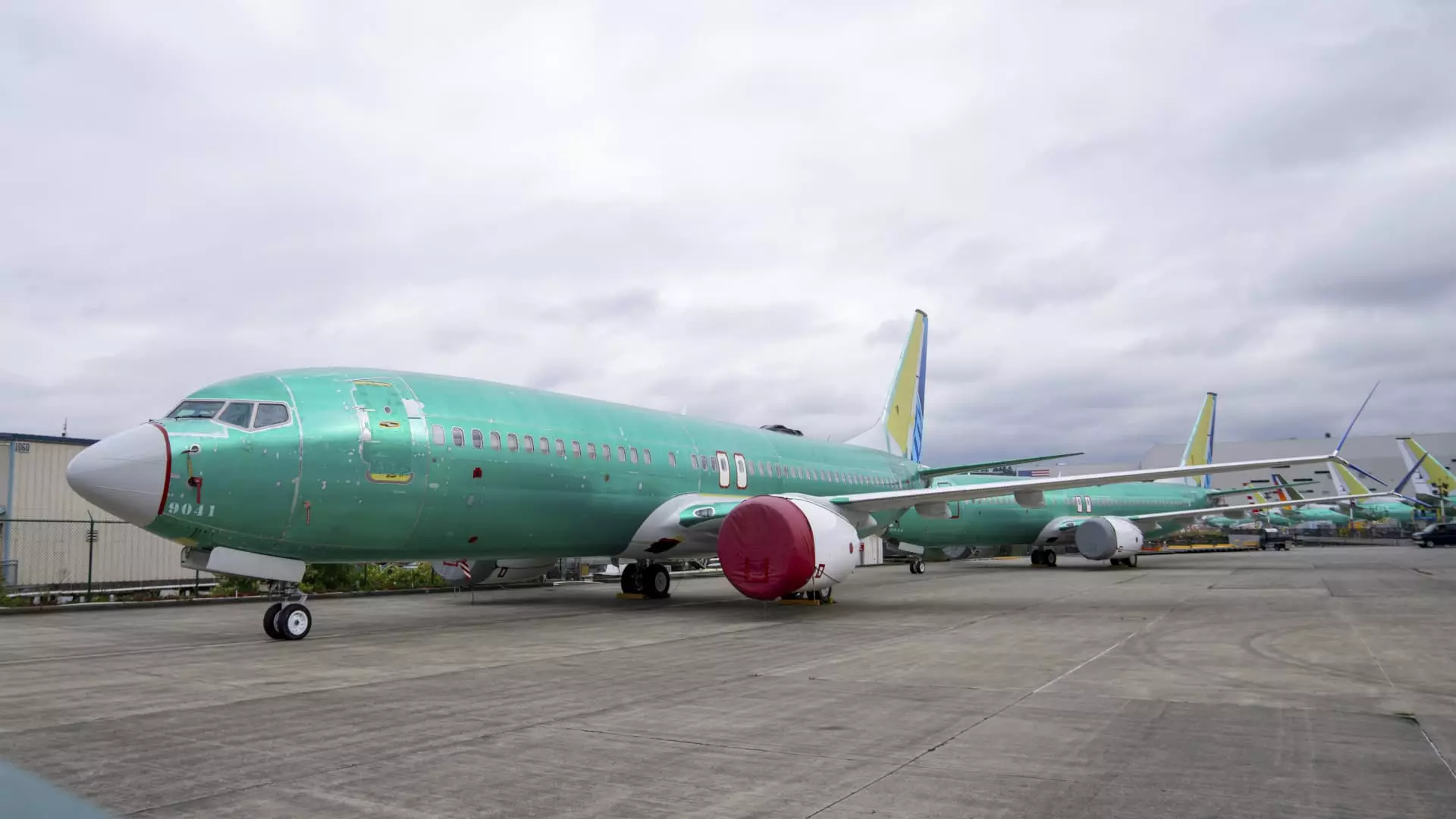Boeing, a stalwart in the aerospace industry, is currently grappling with formidable challenges that have prompted a radical decision to reduce its workforce by approximately 10%, translating to around 17,000 jobs. This drastic measure comes amid significant losses and a protracted machinist strike that has effectively halted operations at their aircraft manufacturing facilities for over a month. The downward spiral of Boeing’s operational efficiency places a spotlight on the broader implications for the company and the industry at large.
The ongoing labor dispute has not only stifled production but has brought to the forefront profound questions regarding labor relations in an industry suffering from post-pandemic adjustments. The combination of soaring costs, strained labor relations, and delayed product launches paints a grim picture for a company that has previously enjoyed a robust reputation.
Boeing’s announcement that the launch of its new 777X wide-body aircraft has been postponed until 2026—approximately six years later than planned—serves as a stark indicator of the company’s current standing. The delay highlights not just the challenges associated with certification processes but also the immense financial pressures stemming from ongoing operational halts. With expected losses projected at a staggering $9.97 per share for the upcoming third quarter, Boeing is evidently facing financial distress that many had hoped to mitigate in what was anticipated to be a year of recovery.
Additionally, the company is bracing for substantial pretax charges amounting to $5 billion: $3 billion attributed to its commercial airplane segment and $2 billion from its defense division. The expectation of an operating cash outflow around $1.3 billion only adds to the apprehensions surrounding Boeing’s financial stability. These figures suggest a worrying trend that raises urgent questions about the firm’s future viability.
Leadership Challenges and Labor Relations
CEO Kelly Ortberg’s recent communication to staff emphasizes the difficult path ahead for Boeing. Just over two months into his leadership, Ortberg is tasked with reversing the impact of prior safety and manufacturing crises while simultaneously addressing the current labor turmoil. His position is undoubtedly precarious; balancing the demands of recovery while losing resources to labor conflicts complicates the company’s trajectory.
The conflict with the International Association of Machinists and Aerospace Workers has escalated, further complicating matters. The latest move by Boeing to file a charge of unfair labor practices against the union illustrates the fraught atmosphere between management and labor. As tensions rise, the potential for resolution diminishes, risking further setbacks in both production and employee morale.
Boeing’s decision to implement workforce reductions parallels a wider trend within the aerospace industry, which has seen similar layoffs and operational adjustments in the wake of the COVID-19 pandemic. As stakeholders from suppliers to employees grapple with these changes, the cascading effects could contribute to a fragile recovery across the sector. The need for structural changes, as indicated by Ortberg, suggests that Boeing may not only be addressing its immediate financial woes but also positioning itself to remain competitive in an evolving market.
Industry analysts are closely observing these developments, as credit rating agencies have flagged Boeing’s risk of losing its investment-grade status. Such a downgrade could have lasting implications for the company’s financing capabilities and its attractiveness to investors.
Boeing stands at a crossroads in an era of unprecedented challenges. The workforce reduction, while necessary for financial survivability, symbolizes a shift in how the company must adapt to a landscape fraught with labor disputes and operational constraints. The future of Boeing will depend on its ability to navigate these difficult waters, restoring not only financial stability but also employee relations, customer confidence, and ultimately, its historic legacy in the aerospace industry.
Moving forward, the emphasis will likely need to be placed on collaboration and innovation, re-establishing trust within the workforce and securing a more resilient operational framework. Only time will tell if Boeing can chart a course back to the forefront of aviation while learning from the lessons of its current tribulations.

